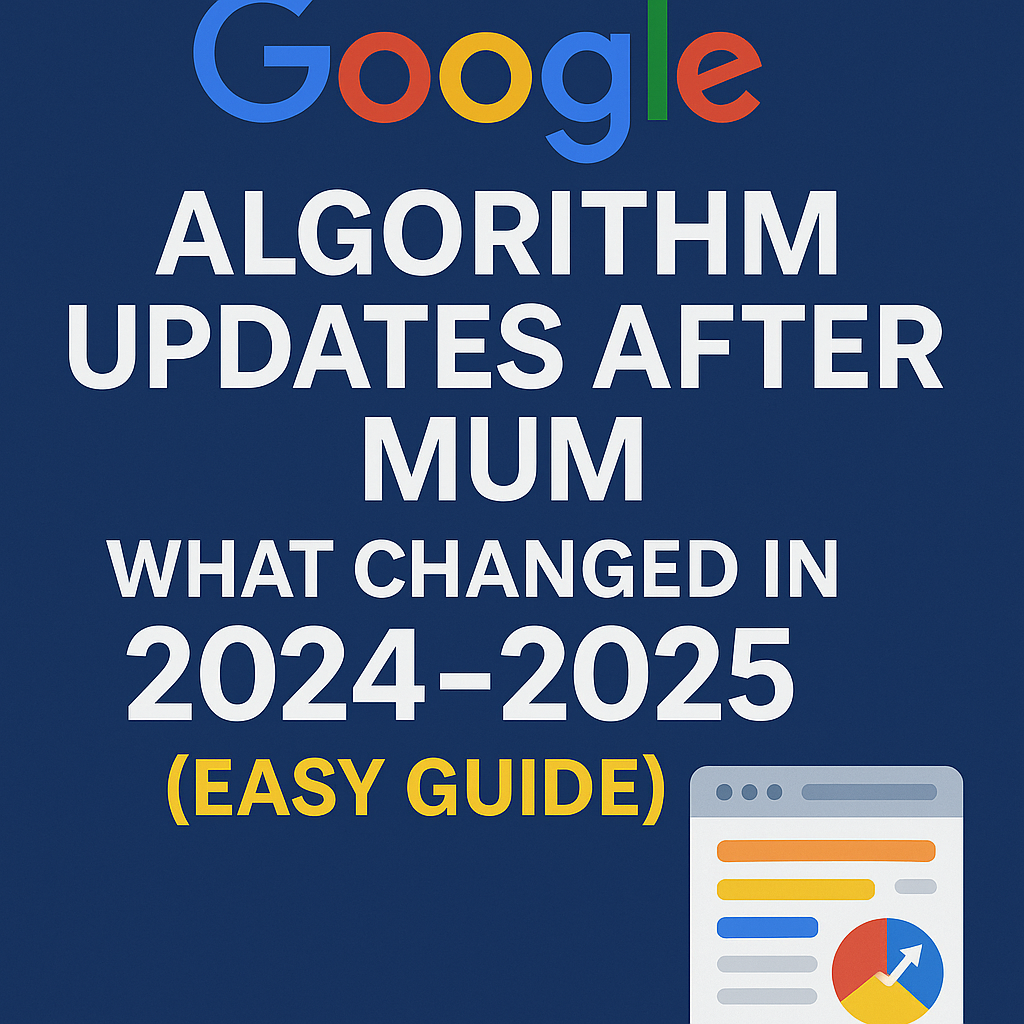Google Algorithm Updates After MUM: What Changed in 2024–2025 (Easy Guide)
What Changed in Google Search After MUM (in Plain English)
Google’s MUM (Multitask Unified Model), announced in May 2021, was a breakthrough in how search engines understand queries across text, images, video, and even multiple languages. But what happened after MUM? Let’s walk through the next big changes in simple terms, with visuals at every step.

1) The March 2024 Core Update
In March 2024, Google released a major core update. Its goal: show less low-value, clickbait-style content and more genuinely helpful results. Alongside it, Google introduced new spam policies (explained below).
2) Helpful Content Folded Into Core Systems
Before 2024, Google had a separate “Helpful Content System.” Starting March 2024, helpfulness is now evaluated by multiple core ranking systems. This means there isn’t a single “HCU switch” to fix. Instead, overall quality and user satisfaction matter more than ever.
3) New Spam Policies
Google targeted three types of content abuse in 2024:
- Scaled content abuse: Mass-producing thin/duplicate pages (human, AI, or both) just to rank.
- Site reputation abuse (“parasite SEO”): Hosting third-party pages on trusted sites (like unrelated coupon content) only to borrow authority.
- Expired domain abuse: Buying old domains to push low-value, misleading content.
4) March 2025 Core Update
In March 2025, Google released another core update. It refined how relevance and usefulness are judged across many queries. For site owners, this means focusing on depth, demonstrating real-world expertise, and ensuring content matches user intent.
5) June–July 2025 Core Update
Just a few months later, Google rolled out the June–July 2025 Core Update. This update further refined ranking signals to surface the most relevant and satisfying content. Many SEOs noticed shifts, but Google’s message was clear: focus on E-E-A-T (Experience, Expertise, Authoritativeness, Trustworthiness) and good user experience.
6) The Simple Post-MUM Playbook
What do all these updates mean in practice? Here’s a one-screen checklist you can follow:
Do this: Map content to search intent, prune or improve thin pages, show first-hand expertise, and keep UX clean.
Avoid this: Mass-spinning templates, parasite SEO content, or buying expired domains for low-value content.
Final Takeaway
MUM (2021) made Google better at understanding content. The 2024–2025 updates made Google stricter at rewarding quality and penalizing shortcuts. Together, these shifts mean the best long-term SEO strategy is simple: focus on genuinely useful, trustworthy, experience-driven content that helps users.
